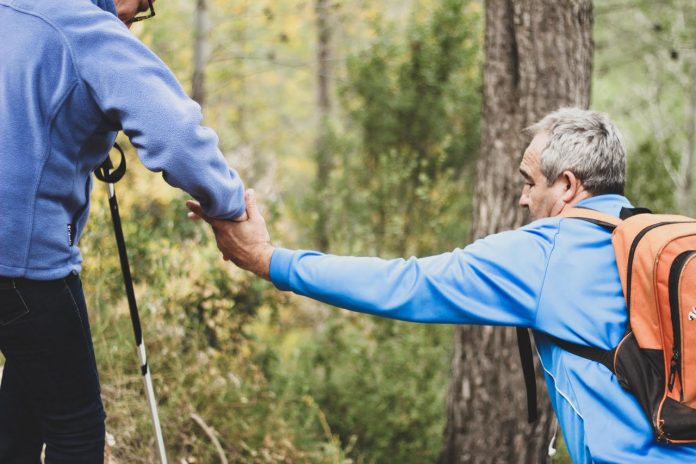Exercise has many benefits, and those don’t go away as you get older. In fact, many of them become more important over time. It reduces the incidence of disease, prevents many chronic health conditions and helps you maintain a healthy weight. If that weren’t enough, physical activity is linked to improved cognitive function, moods and social engagement as well as a reduced risk of falls.
It is one thing to know the benefits of exercising. It is another altogether to include physical activity as part of your daily routine. This becomes even more challenging as you get older and safety concerns enter the picture. Following basic exercise safety precautions and taking your own limitations into considerations can be helpful. By following these guidelines, you will be able to increase your overall health, improve your mood and enjoy the many benefits of exercising safely.
1. Exercise With Friends
You do not have to exercise alone in your own little bubble. In fact, one of the greatest benefits for seniors who participate in exercise classes is the chance to spend time with their peers. Joining a seniors-only fitness center, enrolling in Silver Sneakers or the older adult program at your local facility, or participating in wellness programs at your local senior center can all help you meet exercise and social goals. Signing up for senior games is another great option to add physical activity to your routine in a fun and competitive way.
2. Hit the Pool
Many people find that water exercises are a great way to fit in both cardiovascular and strength training. If you don’t enjoy water aerobics, swimming is also a great way to take advantage of water’s supportive and gentle environment. The benefits of it are numerous and may make it easier to justify the cost of inground pool installation.
3. Focus on Your Balance
Reduced balance can lead to an increased risk of falls for seniors. Since falls are the leading cause of hospitalization among older adults, minimizing them is important. Increasing your strength and flexibility will help you maintain a sense of balance and can lower your fall risk. Activities like tai chi and dancing that require complex movements and awareness of body positioning have been shown to help. There are also programs, like A Matter of Balance, that are designed specifically to address the issue and reduce the incidence of falls among seniors.
4. Stay Within Your Comfort Level
Not everyone will want to hit the trail for a five-mile hike, and you should be aware of your limitations. Exercising within your comfort level is important for people of every age, but it becomes even more so when age-related conditions like osteoporosis and reduced balance are added to the equation.
5. Cover all Aspects of Your Fitness
There are three main categories of exercise: cardiovascular, strength and flexibility training. Your fitness program should encompass all of them for the best results. Keep in mind that many activities and forms of exercise fit into more than one category of training. For example, yoga is a flexibility exercise, but it also strengthens muscles and certain types include a cardiovascular component. Walking is another example. It is a cardio activity, but because it is a weight-bearing exercise you also build muscle strength.
6. Work With a Physical Therapist or Personal Trainer
If you have any medical conditions or you are concerned about starting an exercise program, talk to a professional. Physical therapists and personal trainers who work with older adults can help you choose safe and effective exercises that will help you reach your goals. This will give you a solid foundation to build upon on your own.
Maintaining an active lifestyle becomes increasingly important as you age. Find activities you enjoy and friends you can do them with so you stay engaged and committed. Include exercises that address cardiovascular health and muscle development while also working to increase flexibility and your range of motion for the best results.























